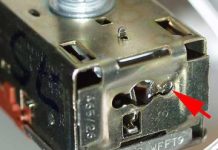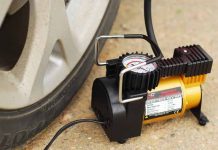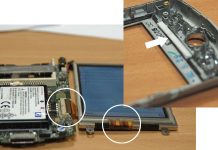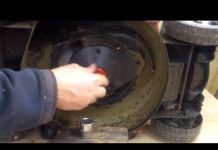You should be as prepared as possible to repair a device such as a hammer drill, which will keep financial and labor costs to a minimum. It's not bad if you are more or less familiar with the construction of a punch, you know what parts and assemblies it consists of, which will allow you to quickly replace a broken part.Most often, the repair of a perforator is reduced to a banal replacement of the "flying" elements, which include:
Another problem is the breakdown of the windings, rewinding of the armature and starter, which also arise from dust. Repair consists in thorough cleaning and replacement of those parts that cannot be repaired. However, "prevention" is a more reliable method. To do this, you need to clean the device every two weeks, soak it with varnish or grease. By the way, the choice of a lubricant must be carefully considered. So, there are several rules. First, it is better to purchase a solution from the same manufacturer (Bosch, Makita, Enkor ), as the perforator itself, in this case, in terms of its composition, oil or varnish will be ideal. If such a composition is not at hand, a diesel engine oil is perfect for you.
The second most popular cause of breakage is brush wear, no matter how much your tool costs - even the most expensive models are prone to this problem. It is very easy to replace them: we disassemble the perforator according to the above described scheme, find worn brushes and put new ones in their place. You just need to correctly determine which of them is best used: coal, graphite or carbon-graphite. So, graphite ones have a long service life, however, due to the hardness of the material, the collector may suffer. Carbon elements have a short life, but they have high-quality contact with other parts of the hammer drill. The purchase of the third option is considered optimal and inexpensive.
There are also problems with the mechanical elements of the device. Each model is equipped with switching modes, and they often fail, especially on cheap devices. The algorithm of work is the same - we disassemble the puncher, find the broken parts, replace them. The main thing is to purchase items suitable for this model. A similar problem often "haunts" cartridges that are exposed to maximum stress. First of all, protect them from dust and dirt by rinsing the elements with grease. But if the cartridge is still broken, we will have nothing to do but change it.
VIDEO
Now you know how to fix a hammer drill and see that most of the breakdowns come down to simple cleaning or replacing defective parts. But if you disassembled the tool, and there are no apparent reasons, it is better to take the device to a service center - specialists will quickly find the cause and eliminate it.
Nothing is eternal. And the most reliable Bosch rock drills start to break down over time. But any malfunction can be repaired by hand if you have a detailed guide on how to carry out repair work. Below we offer you a guide to troubleshooting Bosch rotary hammer drills and how to troubleshoot them.
careless work with the tool;
improper storage of the punch;
heavy loads when working on the working bodies when chiselling or drilling;
overheating of the tool;
long-term work without interruption;
failure to comply with the terms of maintenance.
Conditionally, faults can be divided into mechanical and electrical.
Next, we will consider the faults according to their belonging, dividing them into mechanical and electrical faults.
When mechanical malfunctions appear in the operation of the instrument, an extraneous unpleasant sound appears, sparking increases in the collector area, a burning smell appears, the instrument heats up unnecessarily, its power decreases depending on the duration of work and the effect on the material.
We will consider all the malfunctions on the Bosch 2-26 perforator diagram. Other models, such as Bosch 2-20, 2-24, differ in the design of the intermediate shaft, the installation of various drunk bearings.
The hammer drill does not hammer under load or idle for the following reasons:
the rubber rings of the striker, striker, piston are worn out;
the rolling bearing cage has collapsed;
the cylinder collapsed, the firing pin of the barrel of the percussion mechanism;
cut the splines of the clutch installed on the intermediate shaft;
The main reasons for which a hammer drill hammers, but does not drill, are:
the force of the conical spring that presses the clutch has weakened;
the locking roller does not fix the large gear of the barrel shaft;
does not hold the tool locking mechanism in the barrel;
The hammer drill does not hammer or drill.
The main reasons why the hammer drill does not hammer or drill are:
sheared teeth on the small rotor gear or on the large countershaft gear;
the electric motor of the perforator does not work;
there is no power to the hammer drill motor.
Now about everything in order
Wear of rubber rings on the striker, striker, piston.
This reason appears gradually, as the rubber rings wear out. At first, the blow weakens, then disappears altogether.
The malfunction is eliminated by replacing the indicated rubber rings with new ones.
For any repair of perforators, its assemblies, all rubber products are subject to replacement.
When the drunk bearing, pos. 830, is destroyed, the rotary movement of the intermediate shaft cannot be converted into the translational movement of the cylinder in the percussion mechanism.
Eliminated by completely replacing the rolling bearing.
There are times when the drummer bites into the cylinder poz.26, which leads to the destruction of the cylinder and the impossibility of creating air pressure in the barrel of the impact mechanism. And the second reason: destruction or breakage of the striker pos. 28, leading to the curvature of the part and the impossibility of transmitting the shock impulse.
The malfunction is eliminated by repairing the clutch or completely replacing it.
When the spring pressure (pos. 50) decreases, the clutch slips on the intermediate shaft, without transferring rotation from the small spur gear to the large gear (pos. 22) of the barrel shaft (pos. 821) of the percussion mechanism. By the way, the clutches are arranged differently on different Bosch models.
The large gear wheel, pos. 22, is mounted on the shaft of the barrel, pos. 01, by the roller, pos. 88, pressed against the shoulder of the shaft by a conical spring, pos. 80, and fixed with a retaining ring, pos. 85.
The reason may be a weakening of the force of the conical spring, pos. 80, destruction of the retaining ring, pos. 85, falling out of the fixing roller, pos. 88.
Bosch rotary hammers use two types of chuck: SDS-plus and SDS-max. The difference is in the design of the locking mechanism.
The reason is the wear of the antennae of the raster sleeve of the chuck, which leads to the impossibility of transmitting the shock pulse to the working tool of the perforator.
There is a rotation of the gears with cutting teeth on one of them, more often on a small one.
When the working tool is jammed and the clutch does not work properly, wear or complete destruction of the gear teeth on the perforator shaft and the intermediate shaft occurs.
In this case, the rotor or the large gear of the intermediate shaft is completely changed.
The reasons for a not working electric motor can be:
short circuit in the rotor, stator;
destruction of coal electric brushes;
weakening of the fastening of the brush holders;
burnout of lamellas on the rotor manifold;
breakage of the rotor or stator windings.
The listed malfunctions are eliminated by repair (rewinding the winding manually, replacing the collector and wiring the winding leads) or replacing the rotor, stator, carbon electric brushes with new ones.
The length of serviceable electric brushes cannot be less than 8 mm. When replacing one brush, the second should change automatically.
The rotor or stator windings can be rewound independently with your hands at home.
The reason for this malfunction is a break in the wire that supplies power to the electric motor. Most often, a break occurs at the point where the cable enters the puncher. The wire should be replaced with a new one or repaired. The malfunction can be determined with a tester. If there is no tester, the fault can be found using the power phase and a screwdriver with an indicator neon lamp. Connecting the power wires in turn, at the other end, using a neon screwdriver, determine the presence or absence of a phase.
The punch power button does not work. Determined by the short circuit tester.
Most often, a short circuit of the filter capacitor leads to the failure of the punch button. It is best to replace the button with a new one.
Failure of the punch in the electrical part is accompanied by the appearance of a burning smell, strong heating of the tool during operation, the appearance of large sparking in the area of the punch rotor collector, and poor response of the reverse switch.
The operation of the perforator is influenced by the condition of the carbon brushes, the reliability of the attachment of the brush holders and their correct installation.
A burning smell appears when the stator or rotor windings are short-circuited.
A drop in the power of the perforator with increasing load is characteristic when there is a break in the rotor windings or with a short length of carbon brushes.
A short inter-turn circuit in the stator or rotor most often leads to heating of the perforator.
Large sparking in the collector area is caused by interturn closure of the rotor or burnout of the collector lamellas.
Disruption of the reverse switch occurs due to the burning of its contacts.
But the main reason for all breakdowns is the untimely performance of technical maintenance work and the replacement of carbon brushes.
Carbon brushes need to be replaced after 70 hours of operation or when worn up to 8 mm in length.
We have given the main reasons for the failure of Bosch rock drills.
If you know other malfunctions with Bosch rotary hammers 2-20, 2-24, 2-26, share with us.
Video (click to play).
Video of replacing the raster bushing in the Bosch chuck 2-26
VIDEO VIDEO









